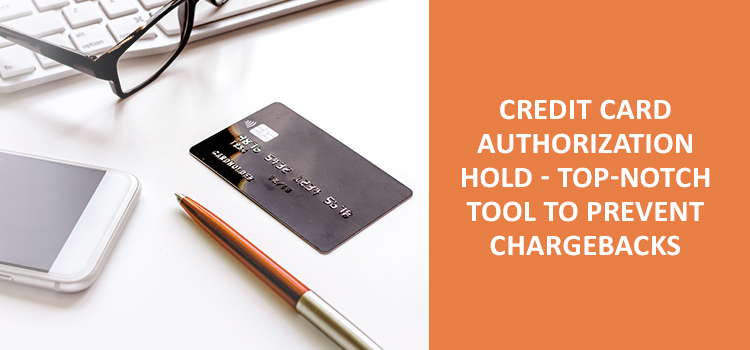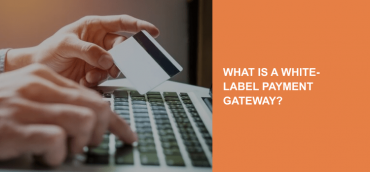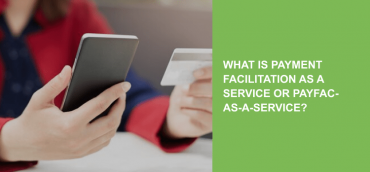Credit card authorization hold is a proven method to phase the chargebacks out. Moreover, it is not an excessive measure. Chargeback ratio of more than 1% puts your business at risk. From a $25 000 fine to a damaged processing history to closure of your merchant account, chargebacks are dangerous. Don’t waste time. Keep reading to learn what credit card authorization hold is and how it can save your business from closure.
What is the difference between a chargeback and a refund?
Before proceeding to the tips, let’s clarify some basics. Understanding the difference between a chargeback and a refund is a must. In both cases, the client doesn‘t like the quality of the product/service delivered. Once the consumer is unhappy with a purchase, he can do the following:
- Ask for a refund. That’s when the consumer contacts the merchant directly. He asks for either a money return or a new product. For example, a woman who saw a crack on a brand-new vase she ordered contacts a merchant. He sends her a new vase or gives the money back. That’s the refund.
- Apply for a chargeback. People apply for a chargeback for three reasons mostly. First, is when they didn’t get an answer from a merchant when trying to get a refund. Second is when a merchant refuses to refund. The third is when they deny the purchase or claim it to be fraudulent. To apply for a chargeback, the consumer contacts the eminent banks (the bank he got his credit card from). The bank then decides whether the chargeback is valid. The merchant doesn’t participate in the process. If the bank finds the chargeback legitimate, the funds are automatically withdrawn from a merchant bank account and are transferred to the client’s bank account. Refunds are less dangerous to merchants than chargebacks as they don`t affect the processing history.
How do chargebacks affect your business success?
To better understand the value of a credit card authorization hold, let’s see how chargebacks affect your business success:
- Credit card networks ban merchants with a high level of chargebacks. Credit card networks like Visa and MasterCard have their programs that monitor the level of chargebacks among their users (businesses only). When the amount of chargebacks is more than 100, the merchant is banned with a $25 000 fixed fine. That is mandatory.
- Payment processors avoid merchants with poor processing history. Yes. Payment processing history isn’t about your turnover only. It is also about your chargebacks and fraud levels. If the PSP (like Ikajo, PayPal, Stripe, etc.) see that a merchant has a high level of chargebacks and fraud, they refuse processing him. The reputation risks are to blame. Payment processors themselves work with banks and do not want to taint the reputation as banks might refuse to cooperate in the future.
- As a merchant, you pay for every chargeback, even if it was invalid. Sad but true, you have to pay a fee for every dispute and refund your clients apply to. Also, if the bank finds the chargebacks invalid, you have no choice but to pay the fee. The average chargeback fee ranges from $15 to $50 per chargeback.
- Your merchant account might get closed That’s the worst scenario to think of, but it is possible as well. If the PSP or a bank you use find your business too risky (due to the high level of chargebacks or fraud), they might close your merchant account.
Now, it seems evident that taking chargeback prevention measures might define your business future.
Example of credit card authorization hold in real life
At Ikajo, we provide credit card authorization hold for free. One of our merchants, who specializes in file-sharing, was devastated by a growing number of chargebacks. There were two main reasons for it:
- Business nature. File-sharing is considered high-risk.
- Subscription payment model. It is also known as recurring billing. People tend to subscribe for a service, forget about their decision, and then, apply for a chargeback. It happens regularly with all the subscription payment model merchants.
To solve the problem, we offered the merchant a solution – put a three days credit card authorization hold. As a result, his chargeback ratio has decreased within a month.
Why the merchant’s chargeback ratio has decreased?
Thanks to the credit card authorization hold, the merchant could manually pick the right clients and sift the low-quality ones.
How does the credit card authorization work?
Let’s see how the credit card authorization works by using the same example of a file-sharing merchant:
- The client enters the merchant’s website and chooses a product.
- The client enters the payment page, prints down his credit card details, and presses the BUY button.
- The funds (the purchase amount) are not withdrawn. They are frozen for three days.
- The merchant has three days to call the client directly and make sure that he/she agrees for all the purchase conditions.
- If everything goes well, the amount is charged within three days.
- If something goes wrong, a merchant can decline the transaction.
The twist of credit card authorization hold is that even a merchant declines the transaction, it is not seen as a chargeback by payment processing networks and banks. That saves the merchant’s processing history and hence, business reputation.
Keep in mind the next two facts:
- You can choose the hold period yourself. It can be for three days, five days, or even a week.
- The client loses his access to the frozen funds. Simply put, he can’t use this money to pay for other purchases.
List of businesses that need credit card authorization hold
We’ve compiled the list basing on our 16 years of professional experience in payment processing. These businesses will benefit from credit card authorization hold most:
- PC support;
- Consulting;
- Airline tickets agency;
- Tours and cruises agency;
- Monthly ticket boxes;
- Antique agency;
- VPN;
- Organization of events;
- File-sharing.
You might also like Why you need to use Verified by Visa 3D Secure fraud prevention.
Do you need a credit card authorization hold?
To see whether your business needs a credit card authorization hold, consider the following tips:
- Analyze your business nature. High-risk activities are called so due to the high possibility of chargebacks. Think of adding a credit card authorization hold to prevent financial issues in the future.
- Think of your payment model. One-time payment model merchants face a lot of chargebacks. However, subscription payment model merchants deal with twice as higher numbers.
- Count your average check amount. If your average check amount is high, the credit card authorization hold will work in your favor. People tend to apply for a chargeback more often is the price of a purchase exceeds $500.
- Count the chargeback and fraud ratio. It will help to see your current financial state.
- Know your chargebacks’ rights. Forewarned is forearmed. Learn more about parties involved, reimbursement and time frames. Understanding your chargebacks rights strengthens your position as a business leader.
How to count my chargeback ratio?
To count the chargeback ratio, divide the number of chargebacks into the number of transactions.
What is the fraud ratio?
To count the fraud ratio, divide the total amount of fraud transactions (in dollars or the currency you use) into the monthly turnover.
What are the other ways to prevent chargebacks?
- Use fraud and chargeback prevention software. Usually, PSPs offer their software once you open a merchant account. At Ikajo International, we’ve developed a Charge Advisor. Thanks to its high-end technology, we resolved 98% of disputes in the merchant’s favor in 2018. Learn more about how fraud and chargebacks prevention works in general.
- Create a clear Refund policy and Terms & Conditions pages. Creating high-quality and detailed Refund Policy and Terms & Condition pages is a must. It will play in your favor when the consumer applies for a chargeback. And vice versa, if those pages lack necessary details, you are more than likely to lose.
- Provide 24/7 customer support. As mentioned before, the majority of clients first ask for a refund. If they don’t get a response, they apply for a chargeback. Make sure to provide 24/7 customer support to avoid such misunderstanding.
Summary
Let’s sum up the information above by listing the main points discussed:
- Merchant can set up the preferable hold time individually.
- During the authorization hold, a merchant ( or a responsible team member) can contact the client directly to clarify all the details. It helps to sift high-quality clients from bad ones as well as to make sure that a client understands what he subscribes to.
- Credit card authorization decreases the number of chargebacks.
- Credit card authorization decreases the amount of fraud.
- Chargeback prevention software combined with 24/7 customer support and high-quality Terms & Conditions and Refund policy pages creates an extra layer of protection for you.









